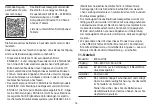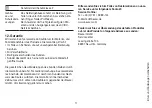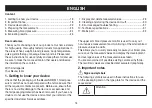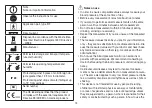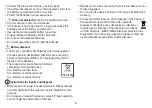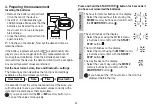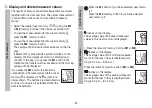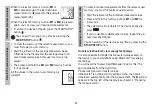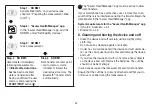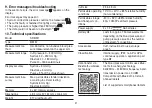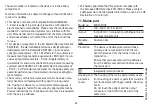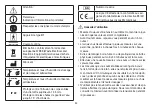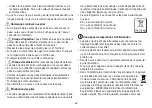
21
• Observe the plus (+) and minus (-) polarity signs.
• If a battery has leaked, put on protective gloves and clean
the battery compartment with a dry cloth.
• Protect the batteries from excessive heat.
•
Risk of explosion!
Never throw batteries into a fire.
• Do not charge or short-circuit batteries.
• If the device is not to be used for a long period, take the
batteries out of the battery compartment.
• Use identical or equivalent battery types only.
• Always replace all batteries at the same time.
• Do not use rechargeable batteries.
• Do not disassemble, split or crush the batteries.
Battery disposal
• The empty, completely flat batteries must be disposed of
through specially designated collection boxes, recycling
points or electronics retailers. You are legally required to
dispose of the batteries.
• The codes below are printed on batteries
containing harmful substances:
Pb = Battery contains lead,
Cd = Battery contains cadmium,
Hg = Battery contains mercury
Instructions for repairs and disposal
• Batteries do not belong in household waste. Please dispose
of empty batteries at the collection points intended for this
purpose.
• Do not repair or adjust the device yourself. Proper operation
can no longer be guaranteed in this case.
• Repairs must only be carried out by Customer Services or au-
thorised suppliers.
• Do not open the device. Failure to comply will invalidate the
warranty.
• For environmental reasons, do not dispose of the device in
the household waste at the end of its useful life.
Dispose of the device at a suitable local collection or
recycling point. Dispose of the device in accordance
with EC Directive – WEEE (Waste Electrical and Electronic
Equipment). If you have any questions, please contact the
local authorities responsible for waste disposal.










